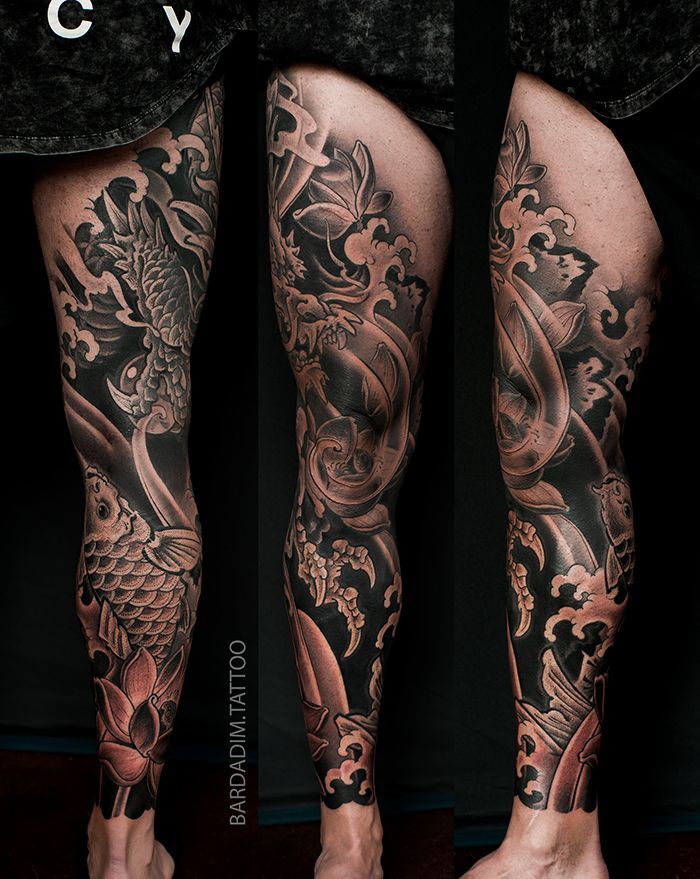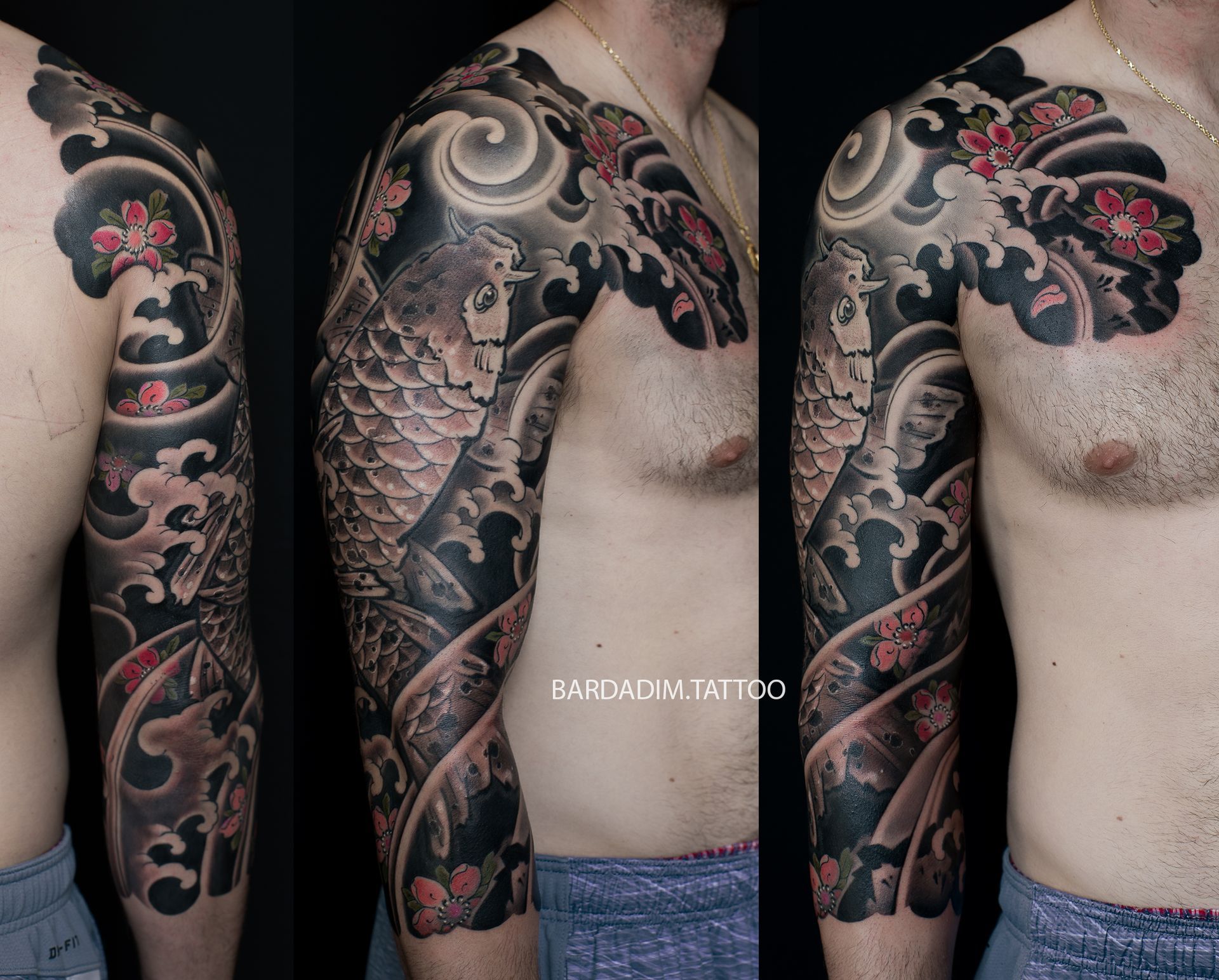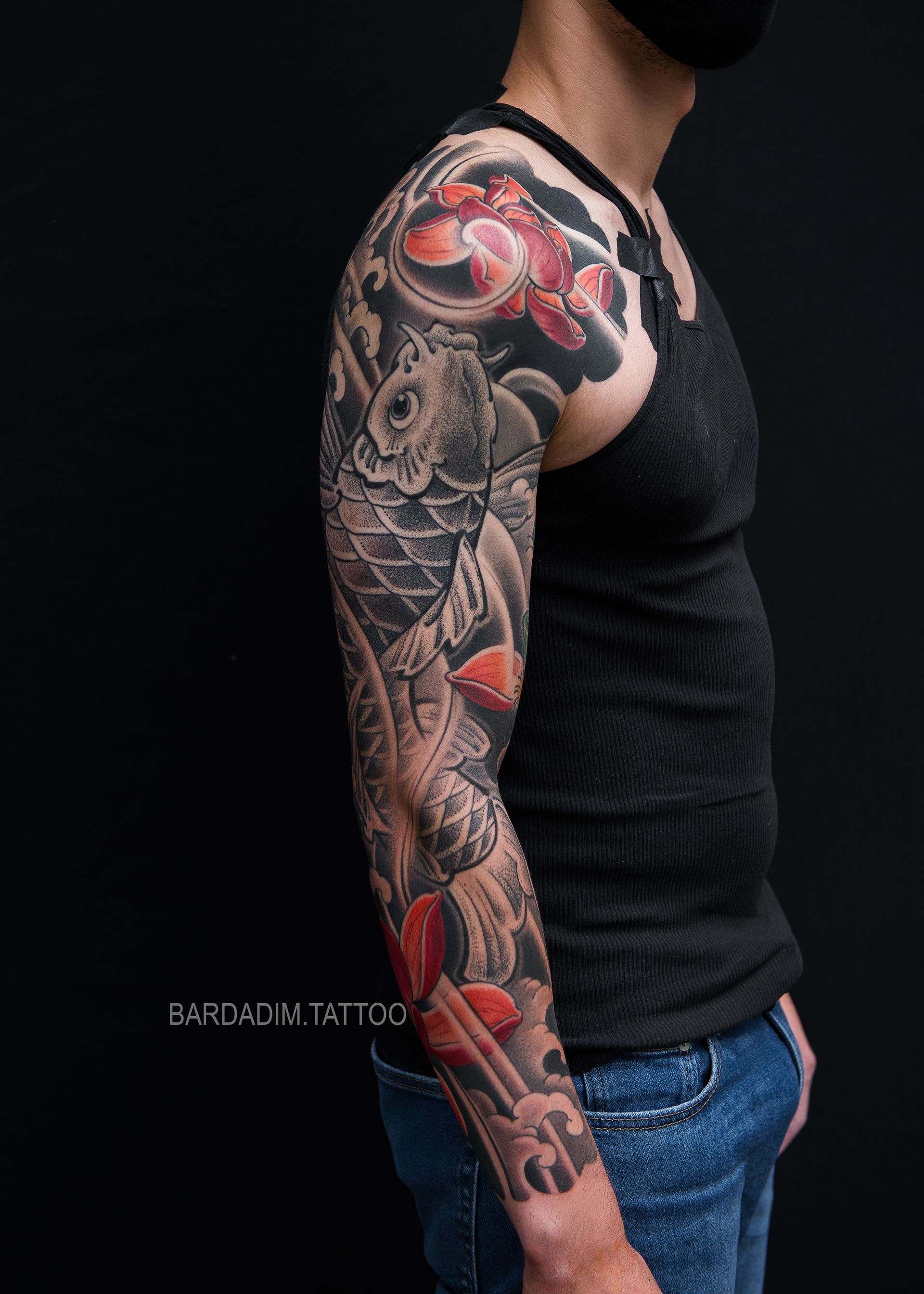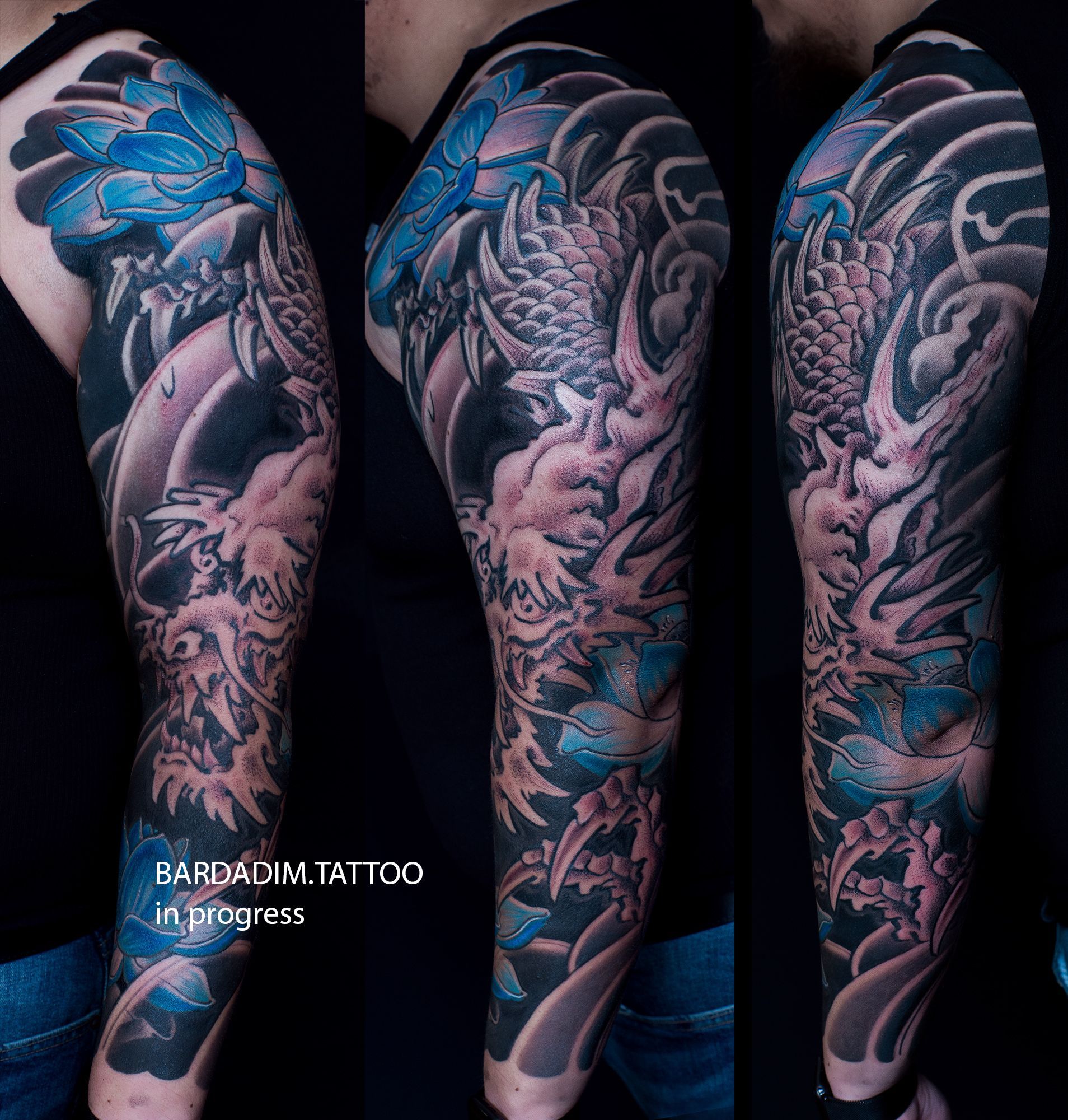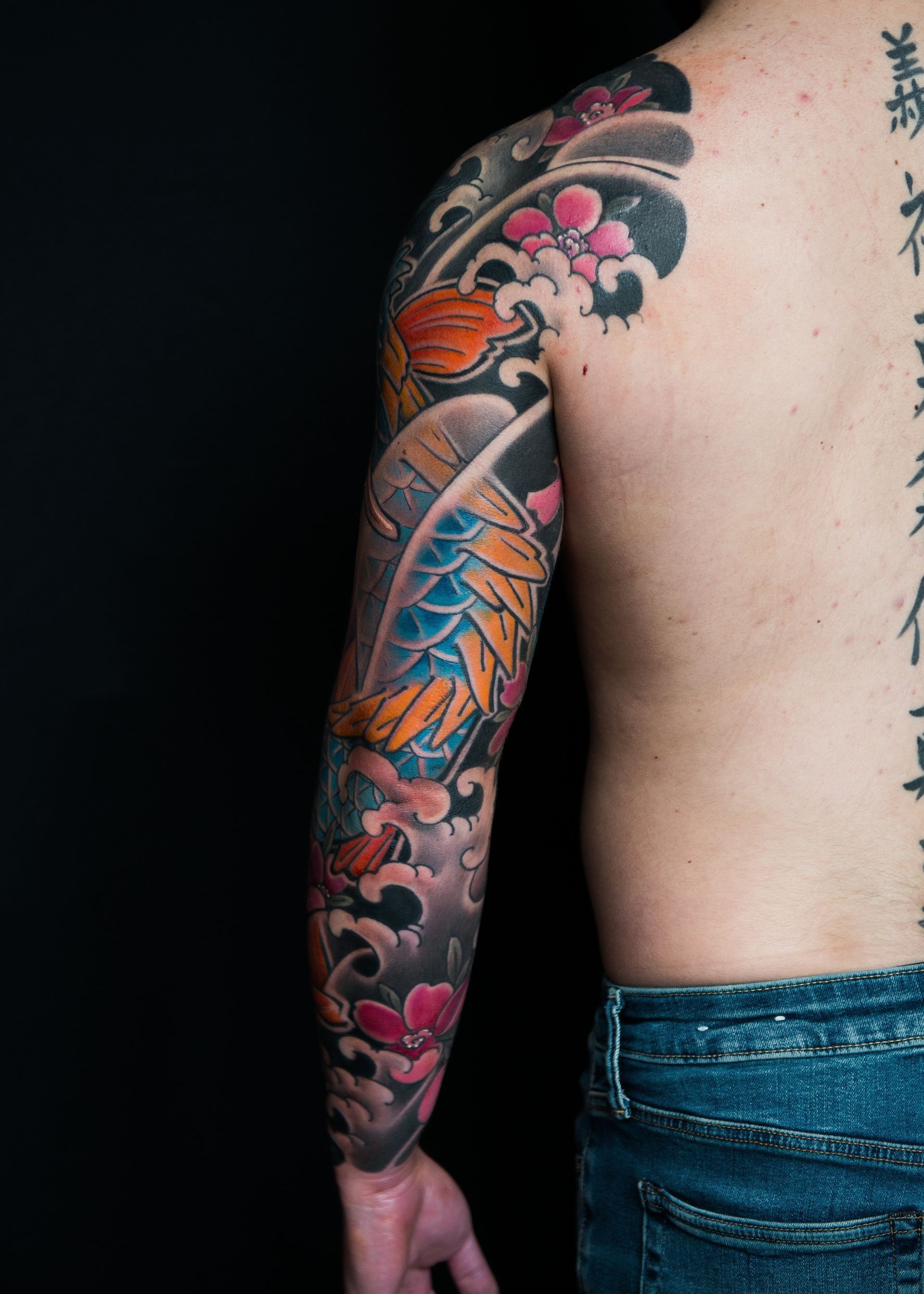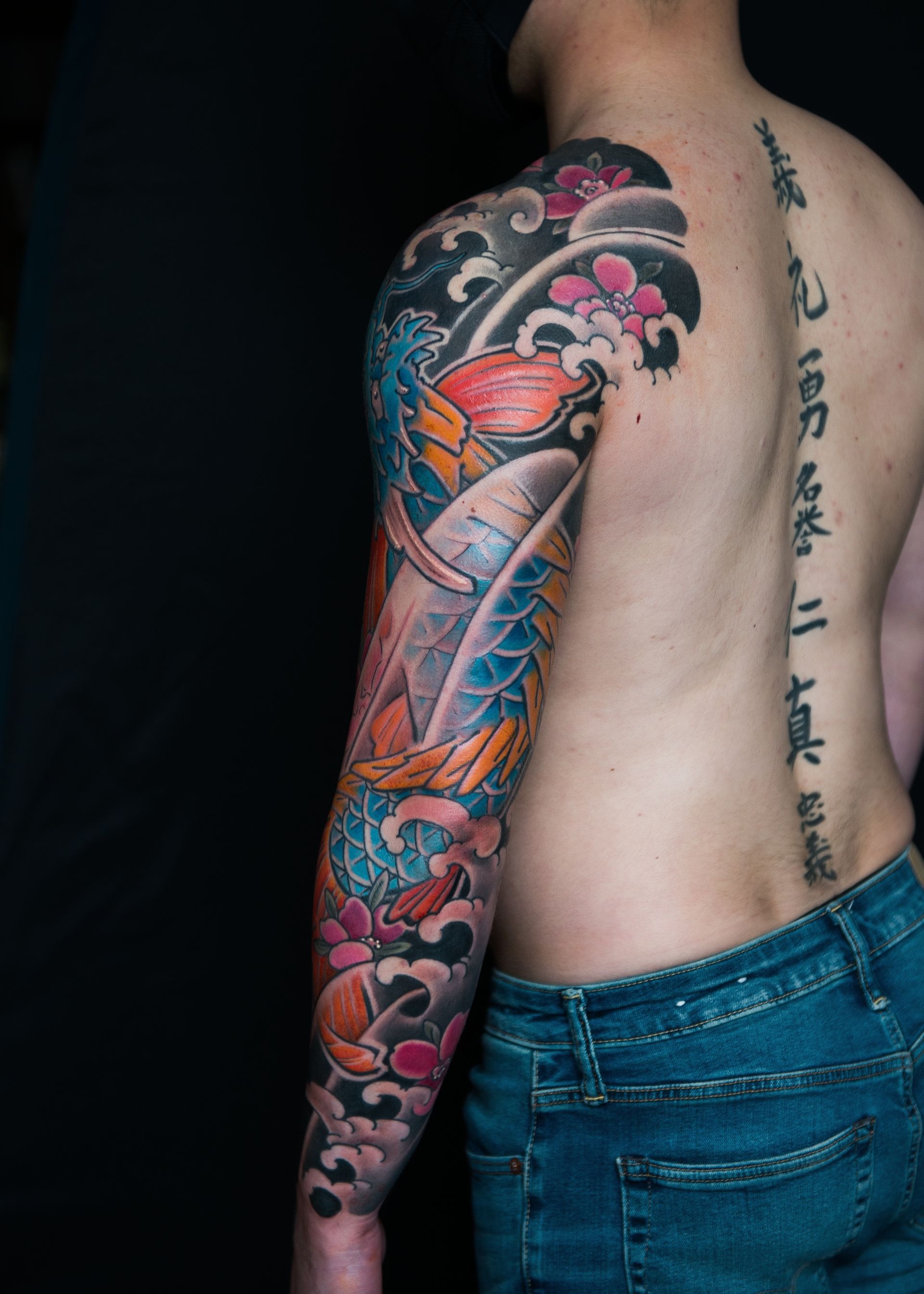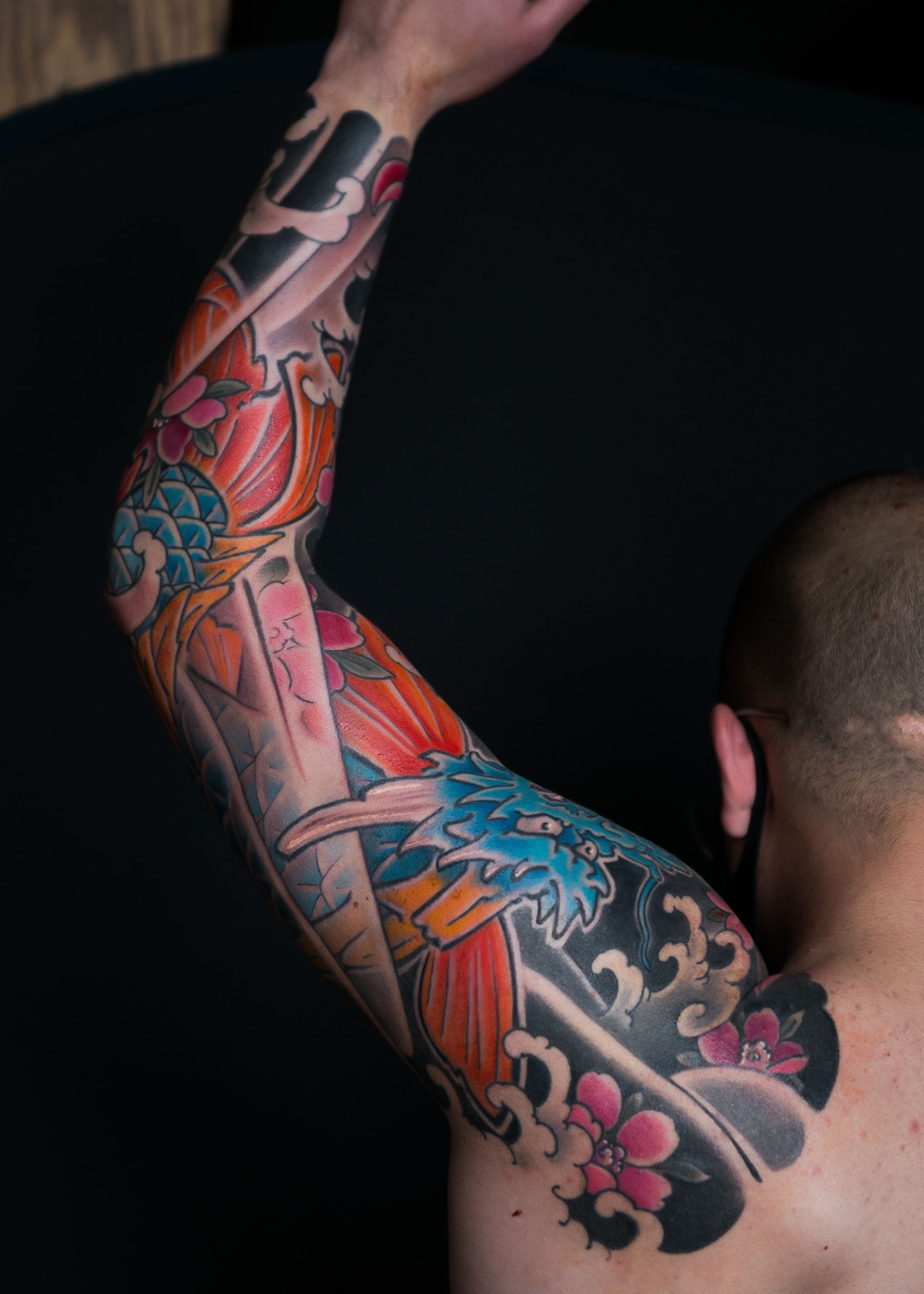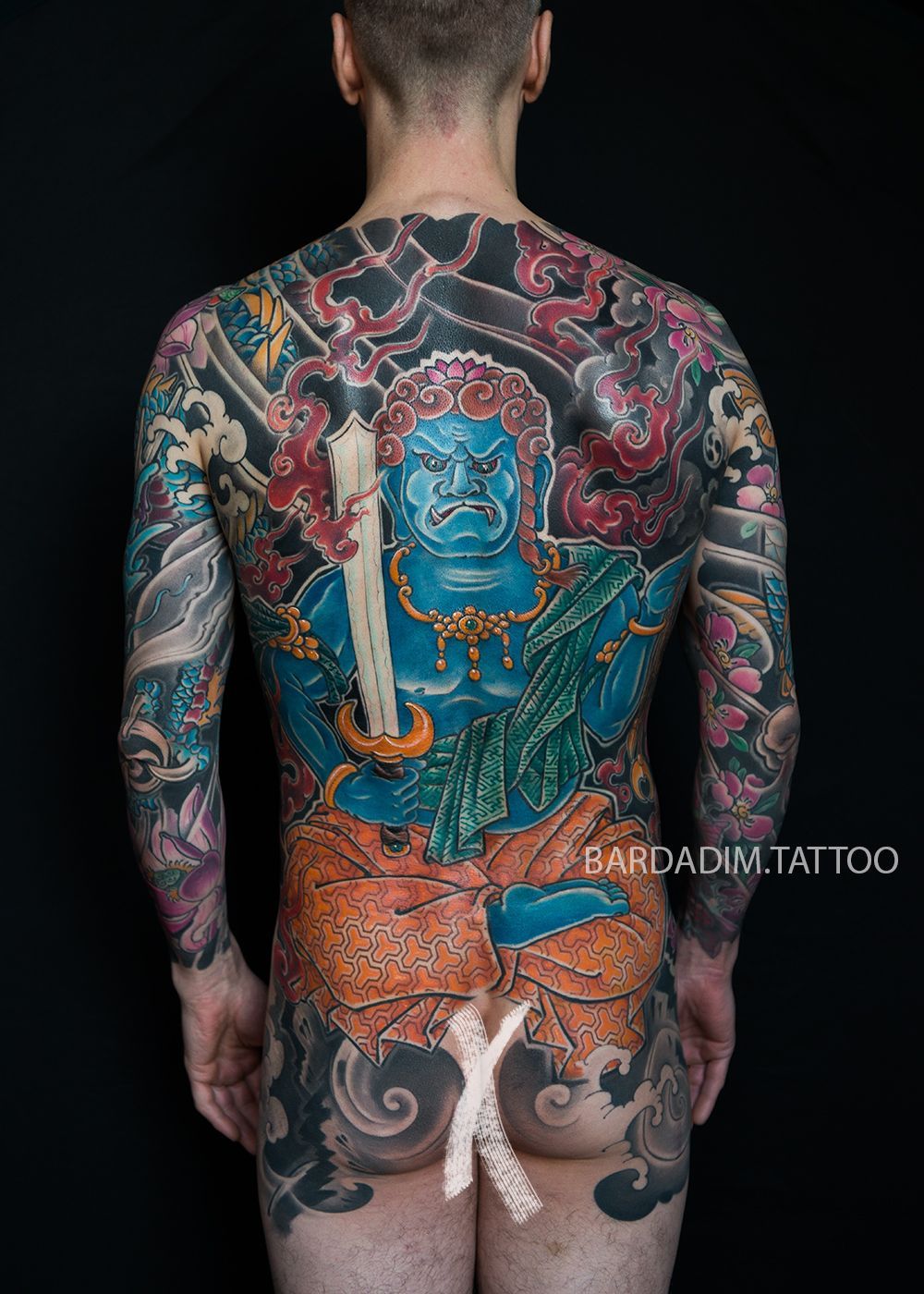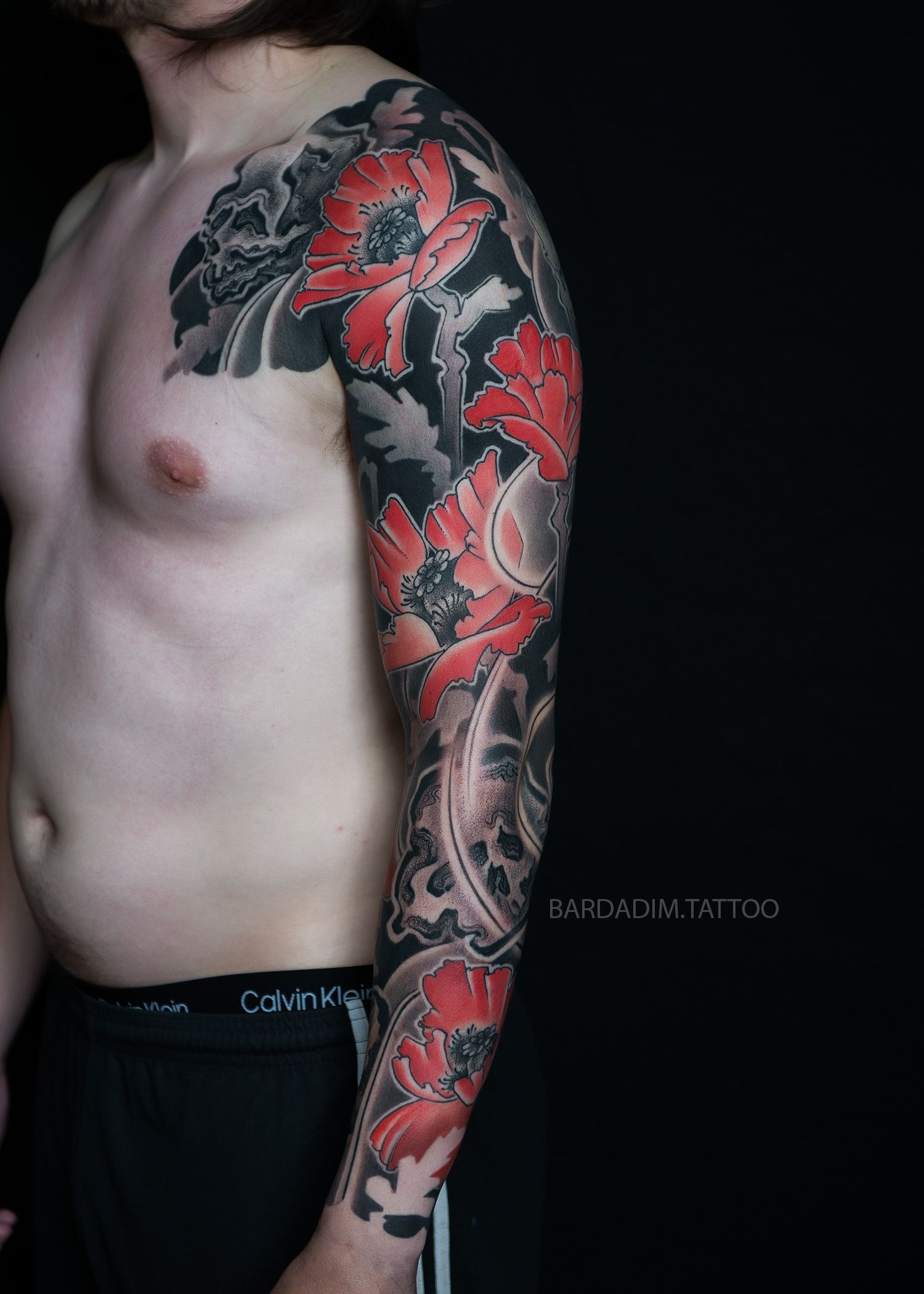Swimming upstream
In
irezumi (traditional Japanese tattooing), the design of a koi fish transforming into a dragon is a powerful symbol derived from an ancient Chinese tale. This legend tells the story of a koi fish swimming upstream, overcoming immense challenges, and eventually transforming into a majestic dragon. This transformation represents perseverance, strength, and the reward of enduring hardship. The journey from koi to dragon symbolizes the process of inner transformation, a theme deeply rooted in both Japanese art and Zen philosophy.
Koi or Dragon?
However, when selecting a design for an irezumi tattoo, it’s often more impactful to focus on either the
koi fish or the
dragon individually, as each represents a crucial stage in this journey. Highlighting just one of these creatures allows the tattoo to emphasize the most important part of the story—whether it’s the struggle (koi) or the triumph (dragon).
Tattoo by George Bardadim
Koi fish AND a Dragon together. Full leg sleeve.
Koi and cherry blossoms. 3/4 sleeve.
Koi and Lotuses
Koi fish
Yellow Koi and Lotuses
Koi and flowers.
Dragon and Lotuses
Dragon and Gingko fallen leaves
Dragon and flames.
Koi-Dragon
For those who wish to illustrate the transformation process itself, the ryuugyo (dragon fish) is an ideal choice. The ryuugyo symbolizes the transitional state and connects deeply with Zen philosophy, where it represents the human mind’s journey towards enlightenment. This metaphor of transformation is not only a visual statement but also a spiritual one, making the ryuugyo a powerful representation of personal growth and spiritual evolution in irezumi designs.
Simplicity is more powerful
The design of a koi fish transforming into a dragon in irezumi symbolizes perseverance, strength, and reward in the face of hardship. While both creatures represent important stages in the journey,
focusing on either the koi or the dragon individually can have a more impactful effect in a tattoo design. The ryuugyo, or dragon fish, is a symbol of the transformation process and connects deeply with Zen philosophy, representing personal growth and spiritual evolution.
All Tattoo Projects
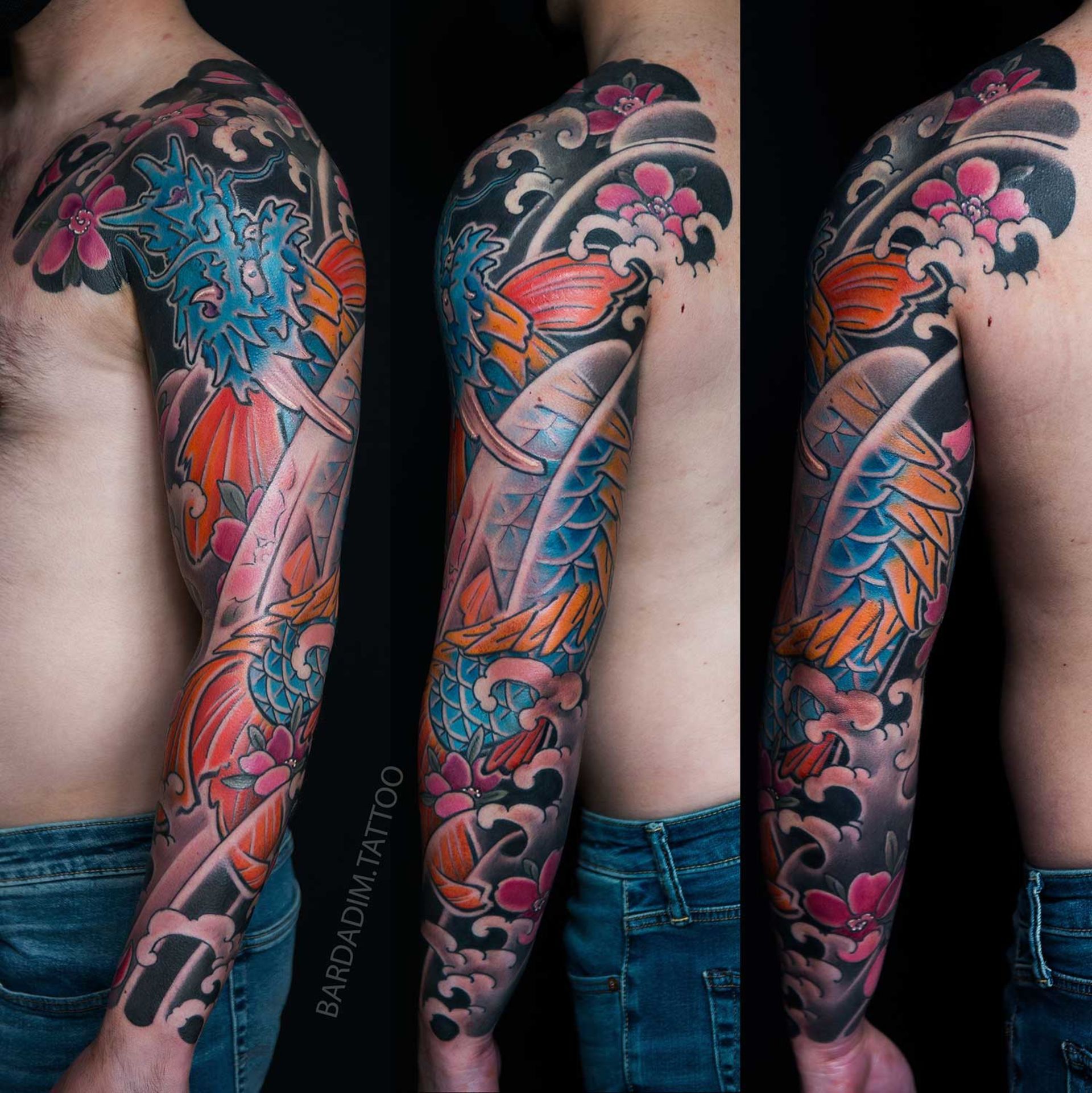
Other Posts


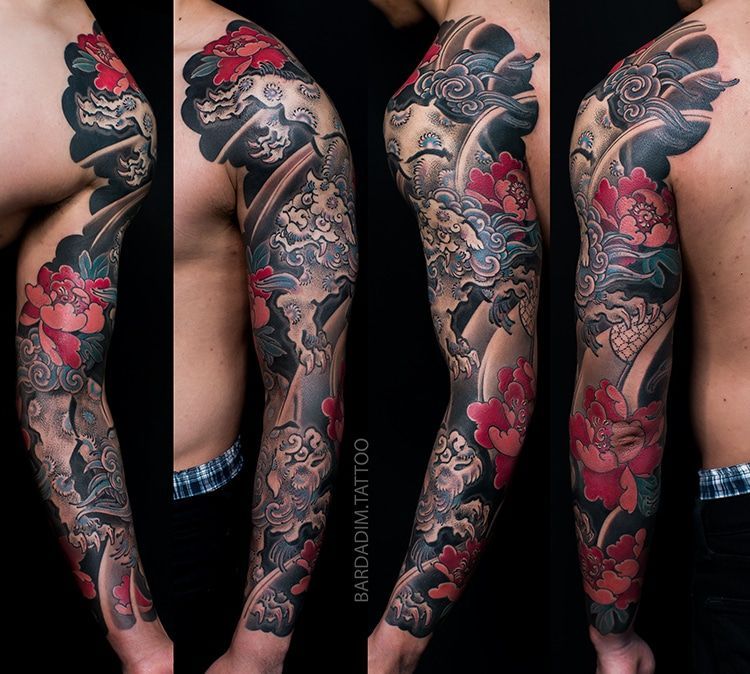
Ready to start your tattoo project?
We do NOT do walk-ins. ONLY private appointments which really easy to schedule. Please learn the process and request your consultation.
We use cookies to enhance your experience on our website. By continuing to use our site, you agree to our use of cookies.


